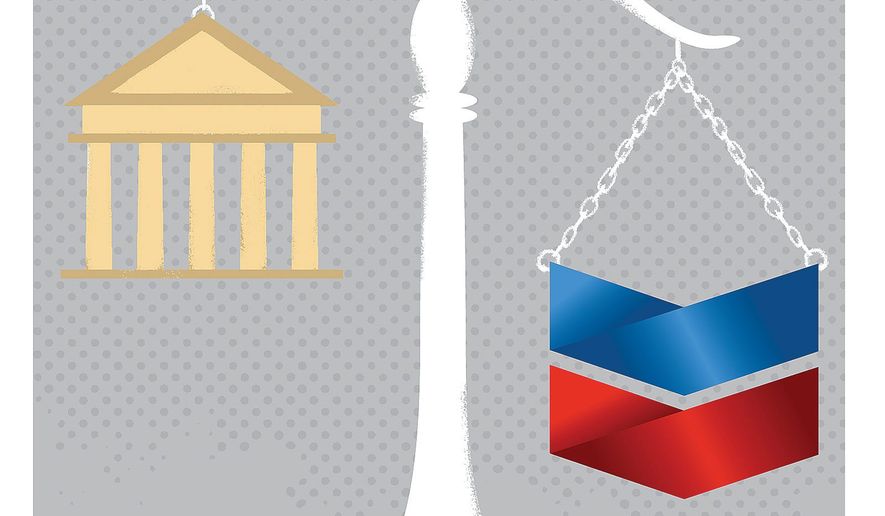Chevron Ruling Overview
The Chevron Ruling is a landmark Supreme Court decision issued in 1984 that established a framework for judicial review of agency interpretations of statutes. The ruling, formally known as Chevron U.S.A., Inc. v. Natural Resources Defense Council, Inc., has had a significant impact on environmental law and administrative law.
The chevron ruling, established by the Supreme Court in 1984, granted deference to federal agencies’ interpretations of ambiguous statutes. However, in a recent landmark decision, the Court overturned chevron deference , holding that agencies must now adhere to a more stringent standard of judicial review.
This shift in the legal landscape has significant implications for the balance of power between the executive and judicial branches, and will likely lead to increased scrutiny of agency actions.
The Chevron Ruling established a two-step framework for judicial review of agency interpretations. Under the first step, the court must determine whether the statute is ambiguous. If the statute is clear, the court must defer to the agency’s interpretation. If the statute is ambiguous, the court must determine whether the agency’s interpretation is reasonable. The court will defer to the agency’s interpretation if it is reasonable, even if the court would have interpreted the statute differently.
Key Provisions
- Courts must defer to an agency’s interpretation of a statute if the statute is ambiguous.
- An agency’s interpretation of a statute is reasonable if it is supported by the statute’s text, structure, and purpose.
- Courts will not defer to an agency’s interpretation of a statute if it is arbitrary, capricious, or manifestly contrary to the statute’s purpose.
Chevron Ruling Implications
The Chevron Ruling has had a profound impact on environmental policy and judicial deference to agency interpretations. This landmark decision established a two-step framework for courts to review agency actions, which has significantly limited their ability to overturn agency decisions.
Implications for Environmental Policy
The Chevron Ruling has made it more difficult for courts to strike down environmental regulations. Under the Chevron framework, courts must first determine whether Congress has spoken clearly on the issue in question. If not, courts must defer to the agency’s interpretation of the statute, even if the court disagrees with that interpretation.
This deference has allowed agencies to adopt more aggressive environmental regulations without fear of judicial interference. As a result, the Chevron Ruling has been credited with helping to protect the environment and public health.
Impact on Judicial Deference
The Chevron Ruling has also had a significant impact on judicial deference to agency interpretations. Prior to Chevron, courts were more likely to overturn agency decisions that they disagreed with. However, under Chevron, courts must now defer to agency interpretations unless they are arbitrary or capricious.
This deference has led to a decrease in the number of successful challenges to agency decisions. As a result, agencies have gained more power to regulate in areas such as environmental protection, health and safety, and financial regulation.
Potential Consequences for Future Environmental Regulations, Chevron ruling
The Chevron Ruling has the potential to have a significant impact on future environmental regulations. By making it more difficult for courts to overturn agency decisions, the Chevron Ruling has given agencies more power to adopt and enforce environmental regulations.
This could lead to more stringent environmental regulations in the future, as agencies are less likely to be constrained by judicial review. However, it could also lead to less flexibility in environmental regulation, as agencies may be less willing to adopt new or innovative approaches that could be challenged in court.
Chevron Ruling Case Studies

The Chevron Ruling has been applied in numerous cases, with varying outcomes. Some cases have upheld agency interpretations under Chevron, while others have rejected them.
Cases Upholding Agency Interpretations
- Auer v. Robbins (1997): The Supreme Court held that the Department of Labor’s interpretation of the Fair Labor Standards Act was entitled to deference under Chevron because it was reasonable and consistent with the statute’s purpose.
- United States v. Mead Corp. (2001): The Supreme Court held that the Environmental Protection Agency’s interpretation of the Clean Water Act was entitled to deference under Chevron because it was based on a permissible construction of the statute and was not arbitrary or capricious.
Cases Rejecting Agency Interpretations
- Chevron U.S.A., Inc. v. Natural Resources Defense Council, Inc. (1984): The Supreme Court held that the Environmental Protection Agency’s interpretation of the Clean Air Act was not entitled to deference under Chevron because it was not based on a permissible construction of the statute and was arbitrary and capricious.
- National Cable & Telecommunications Ass’n v. Brand X Internet Services (2005): The Supreme Court held that the Federal Communications Commission’s interpretation of the Telecommunications Act was not entitled to deference under Chevron because it was not based on a reasonable construction of the statute.
These cases illustrate the Chevron Ruling’s application in practice. Courts will uphold agency interpretations that are reasonable and consistent with the statute’s purpose, but will reject interpretations that are arbitrary or capricious or not based on a permissible construction of the statute.
The Chevron ruling, which established the doctrine of deference to agency interpretations of statutes, has been applied in numerous contexts, including cases involving the civil rights act. In these cases, courts have generally given great weight to the interpretations of the Equal Employment Opportunity Commission (EEOC), the agency responsible for enforcing the civil rights act.
The Chevron ruling is a significant legal precedent that established the framework for judicial deference to agency interpretations of statutes. This concept is crucial for understanding the balance of power between the executive and judicial branches. To learn more about the intricacies of the Chevron ruling, I recommend delving into the comprehensive guide at chevron ruling explained.
This resource provides an in-depth analysis of the ruling’s impact on administrative law and its implications for the separation of powers.
The Chevron ruling established a precedent for judicial deference to agency interpretations of statutes, a principle that has been applied in various contexts, including civil rights law. The Civil Rights Act of 1964, for instance, has been interpreted by agencies to prohibit certain discriminatory practices, and courts have generally upheld these interpretations under the Chevron doctrine.
Thus, the Chevron ruling has played a significant role in shaping the enforcement of civil rights laws.
Chevron ruling, a doctrine that defers to an agency’s interpretation of a statute, is often justified by the principle of stare decisis , which favors adherence to precedent. However, the Supreme Court has recognized that stare decisis is not absolute and may be overcome in certain circumstances.
In Chevron cases, the Court has held that stare decisis is particularly important because it promotes consistency and predictability in the application of the law.
